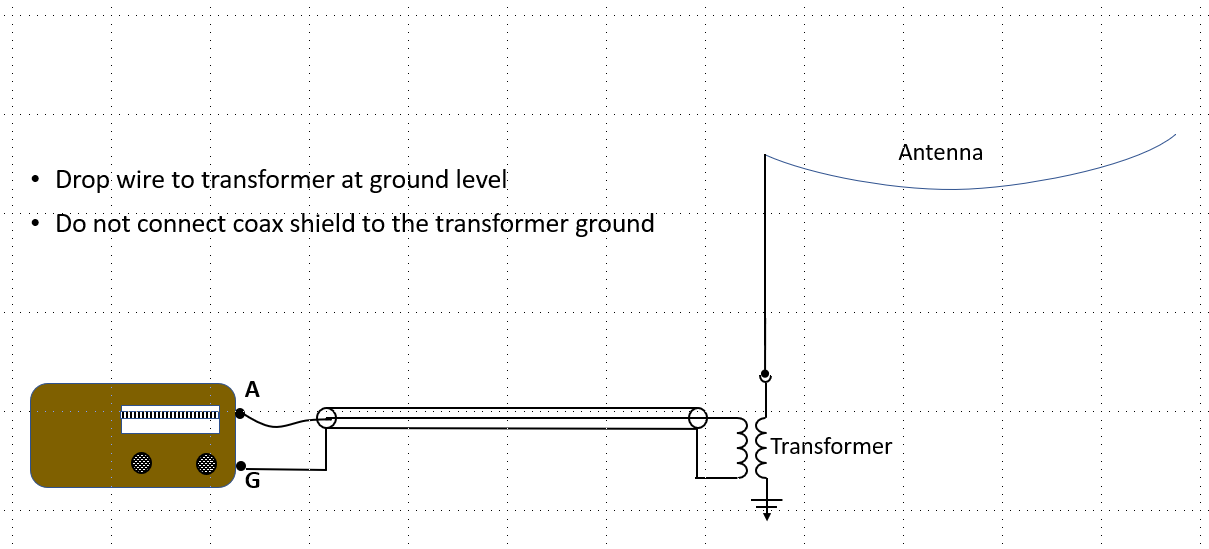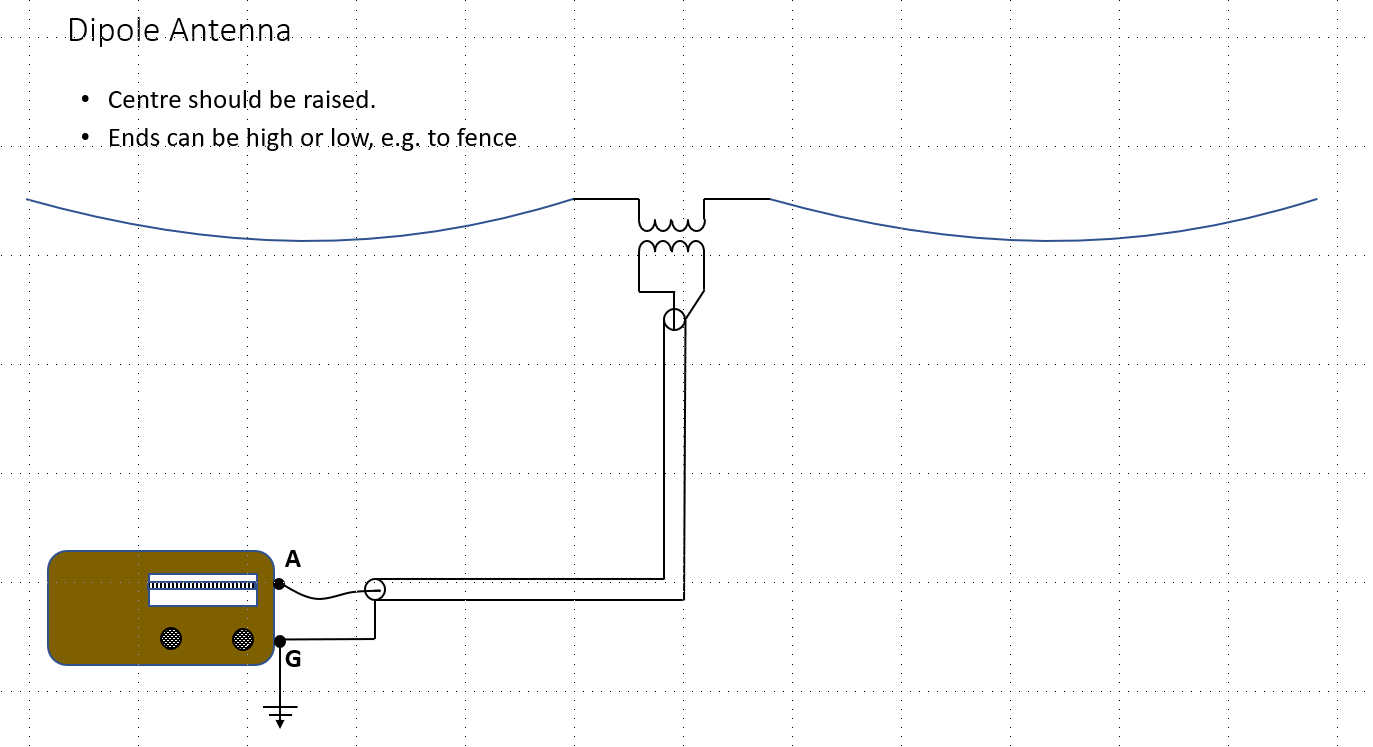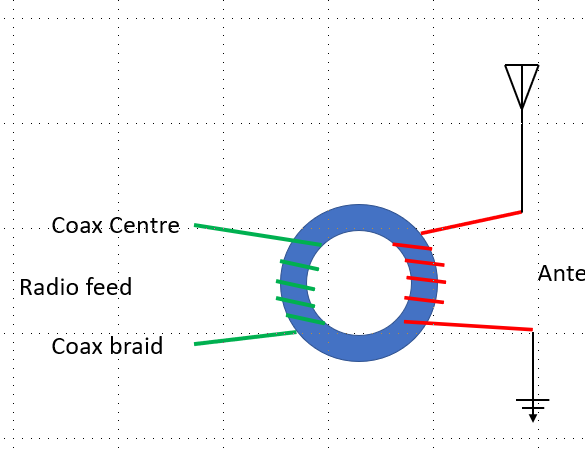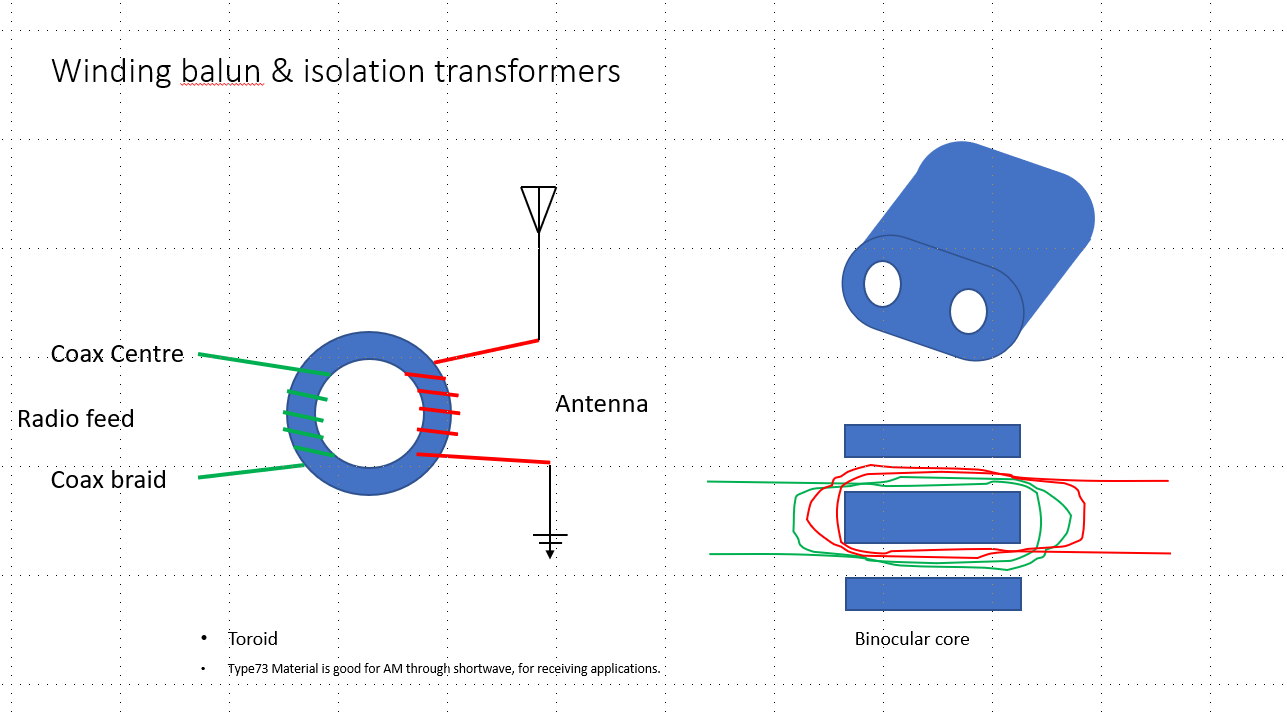01-06-2020, 06:40 PM
OK, much promised, I have got a fair way sketching up the methods I like to use for external antennas. Here's a sneak preview. If desired, I can make this a thread all of its own. Remember, even if you don't have much room for external aerials, the techniques can still apply.
General good way to connect a radio to a "Long Wire" or "Random Wire"

Connecting a dipole or doublet antenna

Simple Signal transformer, indicating connections. The builder can experiment with different ratios of turns.

Toroid cores, or "binocular" cores are great for this application. Type 73 ferrite is very good, but other types seem to work well for receive applications, e.g. parts salvaged from old computer/switching power supplies.

Another good feature of using isolating transformers is that any static build up on the antenna wire is prevented by the dc path to ground. Additionally, any voltage that may unintentionally appear on the terminals of the radio (e.g. AC/DC sets, or the case of a bad cap somewhere) is prevented from reaching the external wire, further guarding against shock hazard.
As mentioned, I have used these methods for long, medium and shortwave receiving aerials, and they are very good at blocking domestic noise that otherwise can get to the antenna system along the ground side of the feed between the radio and antenna.
Let me know what you think, and if more info or illustration would be helpful.
Let me know what you think so far
Cheers
Ed
General good way to connect a radio to a "Long Wire" or "Random Wire"
Connecting a dipole or doublet antenna
Simple Signal transformer, indicating connections. The builder can experiment with different ratios of turns.
Toroid cores, or "binocular" cores are great for this application. Type 73 ferrite is very good, but other types seem to work well for receive applications, e.g. parts salvaged from old computer/switching power supplies.
Another good feature of using isolating transformers is that any static build up on the antenna wire is prevented by the dc path to ground. Additionally, any voltage that may unintentionally appear on the terminals of the radio (e.g. AC/DC sets, or the case of a bad cap somewhere) is prevented from reaching the external wire, further guarding against shock hazard.
As mentioned, I have used these methods for long, medium and shortwave receiving aerials, and they are very good at blocking domestic noise that otherwise can get to the antenna system along the ground side of the feed between the radio and antenna.
Let me know what you think, and if more info or illustration would be helpful.
Let me know what you think so far
Cheers
Ed
I don't hold with furniture that talks.



![[-] [-]](https://philcoradio.com/phorum/images/bootbb/collapse.png)


